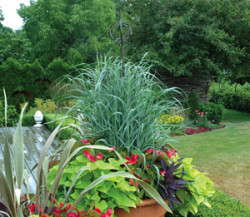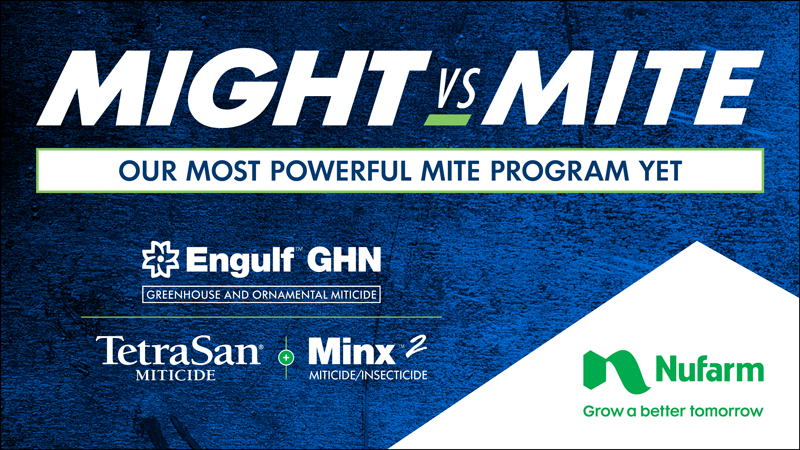Ornamental Grasses — In Search Of No Maintenance

I have long contended that people who purchase our plants don’t really care what the plants are, they only care what they do. They don’t buy red begonias because they are begonias, but because they are red–and if we are smart enough, we sell the best red begonia out there. Similarly cannas are popular because of their bold colorful look, not because they are cannas. Margarita sweet potato provides the eye catching element, hostas are popular because they work in the shade, etc., etc.
One of the most significant “what they do” elements is low maintenance. It always has been important and is becoming even more so as the population ages and less time is spent in the garden. Perennials have provided many low-maintenance items and shrubs are ready to burst from the greenhouse onto the landscape if they can be properly positioned at retail. However, if one asks any landscaper about the best group of plants for low maintenance, ornamental grasses will usually be the answer.
Here are my top three grasses for good looks, good flowering, fall color and availability. There are dozens more, but for landscape and new home use, or for people trying to downsize their garden or landscape, these should be on availability lists if perennials are grown.
Switch Grass
Panicum: To me, the number one up and comer. Easy to grow in containers, and the best of the native grasses to combine upright habit, good flowering and a diversity of cultivars. These can be placed in a garden or landscape in three or three dozen and left alone. Panicum can also serve as a substitute for non-native grasses, especially those that reseed where they are not supposed to. For people working with state and municipal planners (i.e. reclamation, watershed management or ecosystem management), the panicums will become more and more important.
Armitage favorite cultivars: I love ‘Dallas Blue’ if used properly (looks wonderful in mixed containers), ‘Northwind’ for its strong upright growth and ‘Heavy Metal’ for its fall haystack look.
Feather Reed Grass
Calamagrostis ‘Karl Foerster’: If ever a plant provided long season impact, it is ‘Karl Foerster,’ named for the renowned German nurseryman. Plants are easily available, have a sentinel-like habit, bear dozens of flower stems, start flowering in early summer and remain handsome until they are cut back in the spring. There are a few other choices of calamagrostis, but ‘Karl Foerster’ is still the best by far.
Eula Grass
Miscanthus: Every one who grows perennials is aware of miscanthus grass, and there is little that I can tell you that has not already been said. It has been around for so many years, one would think it would have had its day. Not a chance–the sheer numbers of cultivars won’t let landscapers forget about it. Short, tall, variegated, striped, spectacular flowers and nail-tough constitution will keep this grass out there for years to come. There had been some loud talk about miscanthus being under the scrutiny of native plant groups and appearing on invasive plants lists in a few states, and that may still be a problem, but it is only the species and a few early flowering cultivars that are causing some problems.
Armitage favorite cultivars: Too many to name but I still think old-fashioned ‘Gracillimus’ is tough to beat for its flower colors and good habit, ‘Huron Sentinel’ for overall good habit and ‘Purpurescens’ for outstanding fall color.
Two other great grasses: Fountain grass, pennisetum, should be considered by anyone in the grass-use business. This group includes annual forms (‘Jester,’ ‘Purple Majesty,’ ‘Prince,’ ‘Princess’) and tough perennials (‘Cassian’ and ‘Hameln’).
Muhly grass: Muhlenbergia is a spectacular pink-flowering grass, however only hardy to Zone 7. But where it can be grown, it is a traffic stopper.










